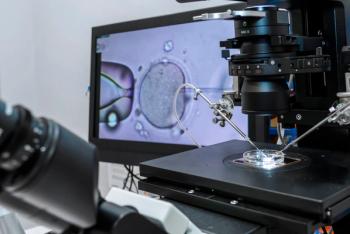
PTSD in women facing breast cancer
A study has found that nearly 1 in 4 women (23%) newly diagnosed with breast cancer reported symptoms consistent with post-traumatic stress disorder (PTSD) shortly after diagnosis. Black and Asian women were more likely to report such symptoms. The study, called “Racial Disparities in Posttraumatic Stress After Diagnosis of Localized Breast Cancer: The BQUAL Study,” has been published online ahead of print in the Journal of the National Cancer Institute.
A
"This study is one of the first to evaluate the course of PTSD after a diagnosis of breast cancer," said lead author Alfred I. Neugut, MD, PhD, of Columbia University's College of Physicians & Surgeons and Mailman School of Public Health, in a Columbia University press release.
"We analyzed interview responses from more than 1,100 women," said Dr. Neugut. "During the first 2 to 3 months after diagnosis, nearly a quarter of them met the criteria for PTSD, although the symptoms declined over the next three months. Younger women were more likely to develop symptoms of PTSD, and data suggest Asian and black women are at a more than 50 percent higher risk than white women."
To conduct the study, the researchers recruited women with newly diagnosed breast cancer, stages I to III, from 3 sites in the United States. Three telephone interviews were conducted: baseline at about 2 to 3 months after diagnosis, first follow-up at 4 months after diagnosis, and second follow-up at 6 months after diagnosis. They measured traumatic stress in each interview using the Impact of Events Scale; recorded sociodemographic, tumor, and treatment factors; and used generalized estimating equations and polytomous logistic regression modeling to examine the associations between variables of interest and PTSD.
Of 1139 participants, 23% reported symptoms consistent with a diagnosis of PTSD at baseline, 16.5% at first follow-up, and 12.6% at the second follow-up. Persistent PTSD was observed among 12.1% of participants, as defined by having PTSD at 2 consecutive interviews. Among participants without PTSD at baseline, 6.6% developed PTSD at the first follow-up interview. Younger age at diagnosis, being black (odds ratio [OR] = 1.48 vs white, 95% confidence interval [CI], 1.04-2.10), and being Asian (OR = 1.69 vs white, 95% CI, 1.10-2.59) were associated with PTSD.
"The ultimate outcome of this research is to find ways to improve the quality of patients' lives," said Dr. Neugut. "If we can identify potential risk factors for PTSD, when women are diagnosed with breast cancer, we could provide early prevention and intervention to minimize PTSD symptoms. This approach might also have an indirect impact on the observed racial disparity in breast cancer survival."
Newsletter
Get the latest clinical updates, case studies, and expert commentary in obstetric and gynecologic care. Sign up now to stay informed.
















